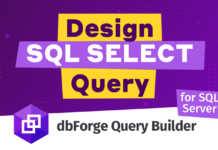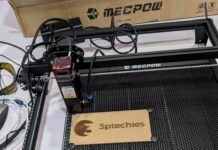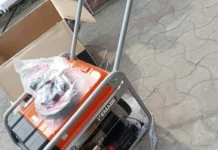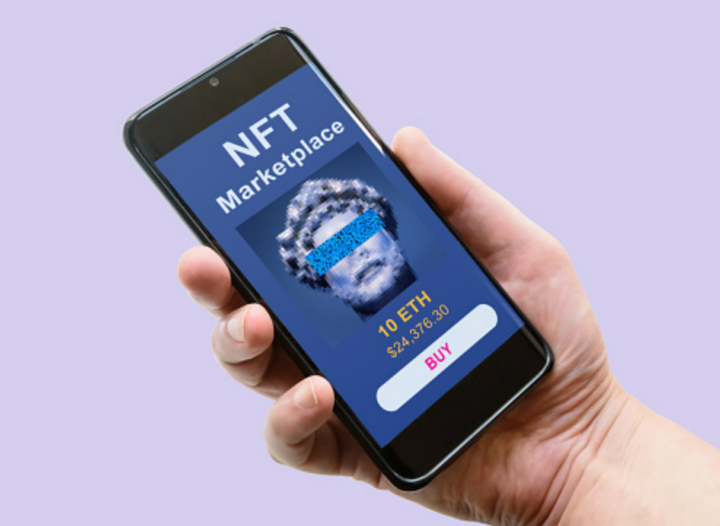
Non-fungible token (NFT) markets are growing rapidly, as are their use cases. This means that NFT marketplace development projects are hot in the crypto industry, and there’s money to be made for anyone who can contribute to the industry’s development with his or her NFT market creation expertise.
Here are the top 10 tips to keep in mind when developing an NFT marketplace so that you can get ahead of the competition.
1. Define The Business Goals And Objectives Of Your Marketplace.
As a developer, creating a successful NFT marketplace can be both a challenging and rewarding experience. It takes time, effort, and knowledge of the technology and market trends to build a successful marketplace.
However, there are certain tips that can help developers create a successful NFT marketplace.
The first tip is to define the business goals and objectives of your marketplace. This means setting clear goals for your marketplace that align with your company’s overall strategy.
You should consider things like how you plan to make money, what type of customers you want to target, and how you will differentiate yourself from other competitors in the space. By having clear objectives for your marketplace, you will have a better understanding of how to design and develop it.
2. Research Your Target Audience And Their Needs.
When it comes to developing a successful NFT marketplace, researching your target audience and their needs is key.
Knowing the characteristics of your ideal user and what they need from an NFT marketplace will help you create a platform that is both attractive and functional.
Start by researching the demographics of your target users. Look into factors such as age, gender, income level, location, and any other relevant information about the people you are targeting.
Additionally, research what type of activities and interests your target audience engages in and how they use technology in their daily lives. This can help you understand how to best design the user experience for your NFT marketplace.
You should also investigate the current NFT marketplaces that exist and analyze the features they offer. Identifying what works and what doesn’t in these existing platforms can help you create something that is both unique and effective.
Additionally, keep an eye on new developments and technologies related to NFTs, as this can give you ideas for potential features or capabilities that could improve your own platform.
Finally, consult with experts and people in the industry who understand the needs of NFT users. This feedback can be invaluable in making sure that your marketplace is addressing the needs of your target audience.
Doing this research now will save time and effort down the line when you begin actually building the platform.
By researching your target audience and their needs, you can create an NFT marketplace that meets their needs and provides them with a pleasant user experience.
With a little bit of preparation, your platform could be the go-to destination for NFT enthusiasts!
3. Create A Unique Value Proposition For Your NFT Marketplace.
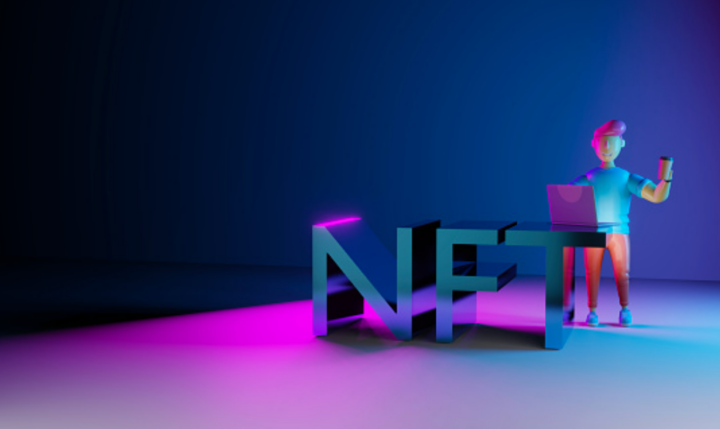 Creating a unique value proposition for your NFT marketplace is a key step in ensuring its success.
Creating a unique value proposition for your NFT marketplace is a key step in ensuring its success.
After all, why would someone want to use your platform if there’s no clear reason to do so?
It can be hard to stand out in a crowded market of NFT marketplaces, but there are a few tips you can follow to create a unique value proposition for your own.
-
- Focus on a particular niche. By honing in on a specific audience or category, you can create a marketplace that caters specifically to their needs. For example, if you specialize in trading video game assets, make sure to include features that appeal to gamers such as live chat and leaderboards.
-
- Offer unique pricing models. Many marketplaces offer similar flat rates or commissions, so consider offering something different that may draw more users. For instance, you could create a tiered pricing model based on the size of the transaction or offer discounts for bulk purchases.
-
- Invest in user experience. Creating an intuitive and seamless experience is key to building a successful marketplace. Invest in design elements like interactive tutorials and an intuitive interface that makes it easy for users to find what they’re looking for and complete transactions quickly and safely.
-
- Incorporate a rewards program. Give your users incentives to come back by offering rewards such as discounts or exclusive access to new products. This can be a great way to increase loyalty and keep users coming back.
-
- Invest in security measures. One of the most important aspects of any NFT marketplace is security. Invest in measures such as multi-factor authentication and encryption to ensure your users’ information and assets remain safe at all times.
4. Choose The Right Platform And Technology Stack For Your Marketplace.
When it comes to developing an NFT marketplace, choosing the right platform and technology stack is essential. The platform you choose and the technologies you use will define your development roadmap and determine the success of your project.
There are a number of different platforms and technology stacks available for NFT marketplace development, so it’s important to evaluate your options carefully.
Here are some tips for choosing the right platform and technology stack for your NFT marketplace:
-
- Understand your project requirements. Identify the features and functionality you want to include in your marketplace and make sure the platform you choose can support them.
-
- Choose a platform that provides the tools you need for NFT marketplace development. This includes an NFT marketplace SDK, blockchain integration, digital asset management, and more.
-
- Evaluate the scalability of the platform. Can it handle high transaction volume? Does it offer support for new technologies?
-
- Consider ease of use when selecting a platform. If you have a team of developers, is the platform easy to learn and use?
-
- Look at security and privacy features. Is data encrypted on the platform? Are there measures in place to prevent fraudulent activities?
-
- Compare pricing models of different platforms. Choose one that fits within your budget and offers good value for money.
-
- Consider platform integrations. Can the platform integrate with other tools and services, such as wallets or analytics services?
-
- Check for customer service and technical support. Make sure the platform provider offers quality customer service and technical support in case you run into any issues.
-
- Assess customer reviews and ratings. See what other people have to say about the platform before you commit to using it.
-
- Research each platform’s roadmap and future development plans. Make sure the platform is planning to improve its capabilities over time so that it can meet your needs in the future.
By following these tips, you can ensure you choose the right platform and technology stack for your NFT marketplace development project. This will help ensure your project is successful and that your users have an enjoyable experience.
5. Build A Strong Team Of Experienced Developers.
Building a successful NFT marketplace requires the help of a skilled team of developers who understand the complexities of the blockchain, smart contracts, and the technology that underpins the marketplace.
When assembling your development team, it is important to select individuals with expertise in web development, backend development, and front-end development. This will ensure that the marketplace is both secure and scalable.
In addition to these technical skills, you’ll also want to make sure that your development team has experience in developing and deploying blockchain applications and has a thorough understanding of smart contract programming.
In order to ensure your team is up-to-date with the latest technologies, it is important to stay informed of new developments in the NFT space. It is also important to have a keen eye for spotting potential problems that could arise during the development process.
By taking the time to hire experienced developers, you will be able to build an NFT marketplace that is safe, secure, and reliable.
6. Ensure That Your Marketplace Is Technically Secure
Creating a secure and reliable NFT Marketplace is essential for developers who are looking to create an engaging platform for users.
Securing your marketplace requires taking a comprehensive approach that incorporates both technical and non-technical measures.
Technical security measures include those that can be implemented by developers, such as:
-
- Develop a secure platform. Utilize advanced encryption techniques to ensure that data stored in your marketplace is secure. Ensure that all user accounts are secured with unique and complex passwords and use two-factor authentication wherever possible.
-
- Use robust authentication protocols. This includes ensuring that authentication requests are sent through secure channels and verifying the identity of users with multi-factor authentication methods such as biometrics or other strong authentication methods.
-
- Integrate security tools. Ensure that you integrate tools such as intrusion detection systems (IDS), web application firewalls (WAFs), and vulnerability scanners into your development process. This will allow you to detect and respond to potential threats quickly.
-
- Perform regular vulnerability scans. These scans should include code reviews and manual security testing to ensure any potential vulnerabilities are identified and addressed quickly.
-
- Implement secure coding practices. Secure coding practices can help reduce the risk of security vulnerabilities by avoiding insecure coding practices, such as using hardcoded passwords, unencrypted communication, or weak authorization mechanisms.
-
- Keep your software up to date. Ensure that your NFT marketplace runs the latest version of any software you are using and perform regular patching and updating of software to address any security vulnerabilities as they are discovered.
-
- Implement data loss prevention measures. These include using encryption, tokenization, and pseudonymization of user data, as well as preventing unauthorized access or downloading of sensitive data.
-
- Monitor user activity. Regularly monitor user activity on your marketplace to detect any suspicious behavior or malicious activities.
-
- Educate users on security best practices. Make sure that users are aware of their role in protecting the security of their data and accounts by providing clear guidelines on setting strong passwords, using two-factor authentication, and more.
-
- Have a security incident response plan in place. Ensure that you have a plan for responding to any security incidents, such as a data breach, and make sure all your employees are familiar with the plan and know what to do if an incident occurs.
-
- By following these steps, developers can create a secure NFT marketplace that users can trust and depend upon for safe transactions.
7. Follow The Latest Trends And Best Practices In Marketplace Development.
As NFT marketplaces continue to gain popularity and traction, developers need to ensure they stay up-to-date on the latest trends and best practices in marketplace development.
You can do this by paying keen attention to frameworks, tools, and service updates relating to NFT marketplace development. You can also look through some recent launches from top developers to see what can be improved upon and the best ways to offer them to your end users.
8. Test Your Marketplace Thoroughly Before Launch.
As the popularity of Non-Fungible Token (NFT) marketplaces continues to grow, developers are keen to take advantage of the opportunities that this exciting new sector presents.
However, with the complexity of these decentralized systems and the potential for huge profits, it’s important to make sure you test your marketplace thoroughly before launch.
Whether you are a seasoned developer or just starting out, the following ten tips will help you ensure a successful launch for your NFT marketplace:
-
- Ensure that your marketplace is technically secure. Use an audit to check for vulnerabilities and patch any that are identified.
-
- Make sure that your code is robust and reliable. Have several people test it before launch and check that it works on different platforms.
-
- Make sure the user interface is intuitive and easy to use. If people have difficulty navigating your marketplace they won’t stay.
-
- Test transaction speed and make sure it meets industry standards. Nobody wants to wait around for ages for a transaction to be completed.
-
- Create a strong customer service system and have support staff on hand to assist with any issues users may have.
-
- Make sure all fees and terms of use are clearly displayed and easily accessible.
-
- Ensure that all data is secure and safe from hacks and thefts.
-
- Conduct research into your competitors and work out how you can differentiate yourself from them.
-
- Utilize analytics tools to track user behavior so you can make improvements where necessary.
-
- Monitor transaction volumes regularly to ensure that your marketplace is running smoothly.
By testing your NFT marketplace thoroughly before launch, you will give yourself the best chance of success in this fast-paced sector. Remember always to consider security, reliability, usability, and competition when designing your marketplace – this will give you the confidence to launch your product confidently into the world of NFTs!
9. Promote Your Marketplace Aggressively After Launch.
Promoting your NFT marketplace aggressively after launch is one of the most important steps to success. It’s essential to get the word out about your marketplace so users can discover it and start trading.
Here are a few tips to promote your marketplace after launch:
-
- Utilize social media – Social media is an invaluable tool for spreading the word about your marketplace. Utilize platforms like Twitter, Facebook, and Instagram to create posts that inform users of your new marketplace. Include visuals, links, and call-to-actions to help drive traffic to your website.
-
- Leverage influencers – Find influencers within the NFT space who would be willing to help you promote your marketplace. Offer rewards or discounts to those who share your posts or help promote your platform.
-
- Use email marketing – Email marketing is another great way to promote your marketplace. Build an email list of people who would be interested in your platform and reach out with updates and promotions.
-
- Leverage press outlets – Reach out to press outlets like CoinDesk and other publications that focus on NFTs and cryptocurrency. Ask them to write stories or reviews about your marketplace.
-
- Create content – Content is king when it comes to digital marketing. Create engaging content that resonates with your target audience and publish it on various platforms. This will help build brand awareness and drive more traffic to your marketplace.
By following these tips, you should be able to effectively promote your NFT marketplace and reach a larger audience. With the right strategy, you can drive more people to your platform and increase adoption.

10. Plan And Execute Your Development Process Carefully.
Developing a successful NFT marketplace is no easy task, and it requires careful planning and execution. As a developer, there are certain tips you should keep in mind when beginning the development process to ensure you create an efficient and secure marketplace.
From the inception stage, designing phase, execution, and marketing phase: Everything must be carefully planned to ensure a super successful launch.




